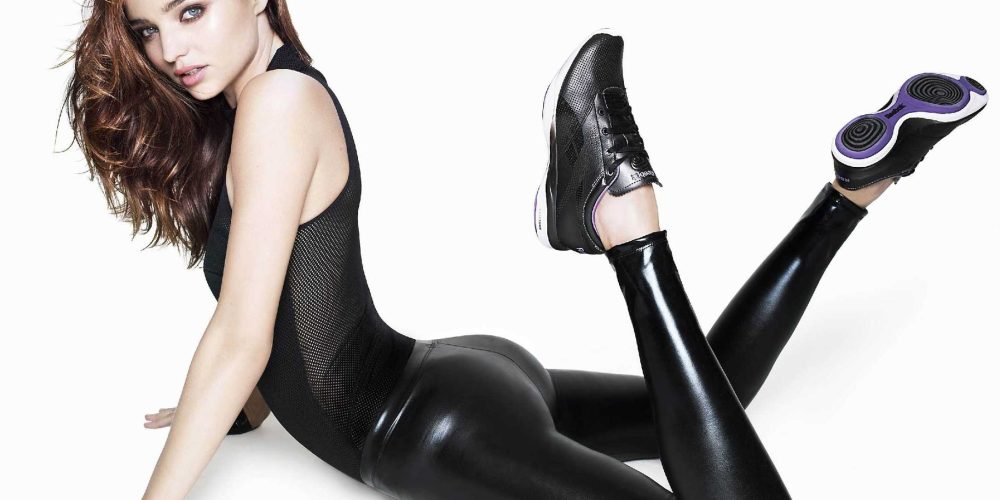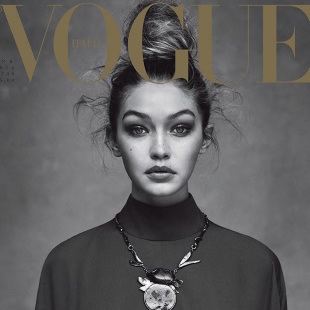If I am doing a shoot for a client I can choose to pull someone off the street who looks right for the job and normally not pay much money or I can hire a skilled professional model and pay a lot more money. The reason I would op for paying more for a professional model is that a shoot will go quicker and have a better chance for success with a pro then someone off the street. So a professional model can actually save a client money by shortening a shoot and the quality of the images will be better (better usually meaning more sales). So what does a professional model bring to a shoot that some one off the street does not, professional attitude and the «model’s tool kit.» The «model’s tool kit» is the ability to express and pose and knowledge of make-up, hairstyling and wardrobe. This package of skill is what makes a model worth their fees.
Working on Expression and Pose
In the old days of melodrama and vaudeville they made a science out of communicating with facial expression or body position. They exaggerated and standardized every emotion that one might want to express. They produced books showing these standard expressions and poses and when you studied theatrics this was part of what you learned. All of this early work was a bit over exaggerated and through the years has gone through a lot of refinement. When photographs began replacing drawings in fashion magazines the photo fashion industry came up with their own set of expressions and poses. These expressions and poses usually communicated beauty and grace. A model would learn a standard set of poses that told where the feet, hands, torso, and head would be positioned. One would work on one’s cheery smile or surprise facial expression. By the early sixties it had become pretty regimented. But just as all the rules for being a model were set, along came the late sixties and a time for breaking all of the rules. It has been a muddled mess since. Today there are no set rules for models except all of the old rules still can apply except we want to break them all the time. The modeling schools say they will teach you the standard modeling poses but the agencies and fashion industry say that there are no standard poses; everything is creative and you either have it or you don’t and we decide who has it.
As a working photographer I think it is great to have both. I like it when I can tell a model to look sad and she has practiced that look in the mirror and can do it on cue. I also like when we can play sad music or tell a side story and get an honest sad expression. I like when shooting a simple fashion shot and I ask the model to go through her short or long group of poses and she has a set routine that we can shoot through. I like it when we need something very different for a shot and I can tell the model how to stretch, twist, and reach and she is aware of her/his body and can do it. I think you should know the rules so you can break them. You should know your body so you are aware of how it moves, what lines it forms, and how it can be coached into different positions. I think you should know yourself and your emotions so you can show these to the camera and feel confident in what you are showing.
photo of modelSo how do you work on expressions and posing? One good way to start is doing activities that teach you how to move you body gracefully. For this I like dance and rhythmic gymnastics. Dancers and gymnasts move great in front of the camera. They know how to created a long sweeping line with their bodies. Other sports can help with kinesthetic knowledge and are good for conditioning but I favor dance to teach how to move and communicate with you body. Of course for expression theater is a great teacher. That is part of what an actor must do at times — communicate without words. If you have an opportunity take a class or participate in these activities, I encourage you to do so.
You can work on facial expressions by practicing them in a mirror. What do I mean by facial expressions? We are all capable of showing various emotions on our face. Most emotions that you can think of can show on your face. Hate, love, sadness, longing, happy, and more can be expressed on your face. What you should do is make a list of all key emotional words you can think of (run through the dictionary) and practice those expressions in front of a mirror. After you have practiced for a while, try them on a friend and see if they can tell what emotion you are conveying. The idea is that when you are in front of the camera and the photographer wants you to look longingly into the distance you know how to do that.
More on Posing
When you are in front of my camera lens your body and how it is positioned become a critical element in making my photograph successful. Learning how to move in front of the camera begins with some basic principles.
Basic Principles
Lines of Force — There are certain principles of design that apply to any visual art. With a model in a photograph your body works as a compositional element. All the basic rules of design apply to how you position your body. Learning basic design rules can help you understand why arm should go one way and a leg the other way. And why when the rules are broken a whole different message is given.
Non-verbal communication — Years ago when I started in college I majored in communication. One of the first classes I took was on non-verbal communication. As may be no surprise curtain body positions communicate different messages. By learning these body positions and recreating them in front of the camera you can communicate a powerful message.
Symbolism — This is a refinement of understanding of non-verbal communication. This is the old nature verses nurture debate. There are curtain body positions that have specific meaning with in a culture context. There can be body position that will mean something in one culture or for one group of people and mean nothing to another. With the global economy and the whole planet reach of the Internet it becomes more important to understand what is mankind universal mind or world view and what is a cultural aberration.
Acting vs. Reacting
In working with a model can get the pose I need in one of two ways by acting or reacting.
Acting or directional modeling — With this type of modeling a scene is set, direction on what is needed from the model for expression, look and pose given, the model must pull from themselves what is needed. On a set a model that can accomplish this is very valuable. I am able to tightly control the communication message and be able to achieve it very quickly.
Reactive modeling — With this type of approach an environment is created, or external forces are applied and the model reacts to the situation. This is where the models personality comes through, improvisational, spontaneity. With some models and some situations this can work very well (more the exception then the rule). In others it is a salvable technique (it is like using the squeaky toy with a baby). A shoot will general take longer and communication objective can be harder to reach. Because of the greater time it takes get acceptable results a model of this type would be of less value.
An Observation on Posing Styles
In moving away from principles and more into what is out there I find four general style of posing based on industries.
1) Classic Fashion — these are poses that were developed up to the 60s. These follow good compositional design and function to make one look attractive. These became so standardized they were thought of a mannequins. This is the style most used in catalog modeling.
2) Anti-Classic or High Fashion — A rebellion against the classic posing started with the 60s rebellion to look unique. This has intern become its own stylized look that is seen mostly in fashion editorial. This style breaks compositional lines and goes for distorted, awkward, deformed and yes ugliness.
3) Commercial print/Acting — Most often the pose is tied to direct non-verbal communication. An ad has an advertising message that need to be stated and how the model is positions carries the statement.
4) Glamour — This area has its own unique set of poses. It is built on Classic fashion and good design but emphasize the sensual and sexy.
How can you learn to pose
I have not seen any good source for learning these principles or for just how do you position your body. Modeling books might have a few basic body positions and tips. Modeling schools do about the same but neither build on a foundation of principles. The best suggestion I have is work on posing by practicing in front of a full-length mirror and doing test shoots. To figure out what to practice look at the fashion magazine to see how to stand but most of the poses are breaking the rule and at this point you need to be learning the rules. You may want to look at fashion catalogs for poses. You would need to pay attention to tilt of the head, position of the hand, and turn of the ankle. These little things can make a big difference. Just as with facial expressions your body posture can relate to an emotional word or phrase. Body posing is easy to show someone but it is hard to put in words.
With both expressions and with posing it is also good to practice with props, products and wardrobe. Props might be a floppy hat, a long shawl, a beach ball. You want to practice reacting to the prop and using the prop. Since the reason for doing these photographs is to sell something, it is good to practice with a product that might be sold. Practice holding the product so it shows well and you don’t cover the label. With fashion you are selling the clothes, practice showing important features. Show off pockets, collar, belt, how the garment moves, what ever makes the garment interesting you want to call attention to it.
Make-up
Make-up is an art. I took my make-up classes from a lady who assisted on the movie Little Big Man. In that movie they took Dustin Hoffman from being a young teenager to a 100 year old man. What she could do with make-up was amazing. If a shoot has a budget for a make-up artist and a good one is available then we just sit back and let him do his magic. But on a shoot without a budget for a make-up artist or in some smaller towns where one is not available, it may well fall upon the model to do her own make-up. Even when you have a make-up artist it is necessary that you know of any corrective make-up you may need.
model photoFor learning make-up there are some great books available. You may also find theatrical make-up classes taught at some community college. The cosmetologist at the local department store may be fine giving some pointers for your street make-up, but make-up for photography can be quite different. This is especially true for B&W photos. A big part of learning make-up is just trying it in front of a mirror. Study something in a book or magazine then try it in front of a mirror. Eventually, you have to get in front of the camera with your make up on and see how it looks.
Make-up for black and white photography gets weird. Color no longer matters. It is only the lightness and darkness that matters. I guess it is a kind of a gothic thing. It takes some getting used to. You must ignore the color and only see the make-up in terms of black, white and grays.
Hair Styling
Being able to do things with your hair can be a great help when photographing. Of course it is great when you have a professional hair stylist who can do some fabulous looks and keep every hair in place, but there may not be a budget for a hair stylist. So again it may fall to the model to be able to do her own hair. I have always thought shoulder length hair was the most versatile. You can put it up, pull it back, comb it to one side, fluff it, curl it, or just leave it natural. Short hair locks you into one look, end of story. Long hair can be fun to work with but not quite as flexible. Being able to restyle your hair can be very helpful on a shoot. You can check various magazines to see what they are doing and practice in a mirror. For most modeling purposes you don’t need to be incredibly creative with your hair — just so you can redo it to offer several different looks.
Wardrobe
In a secondary market, on a lower budget shoot, for your own composite and portfolio you will need a basic working wardrobe. When I was starting in photography the modeling books would list the basic wardrobe a model should have. This, of course, was where the simple black dress came from. I am not sure what should be in one’s closet today, but a range of basics would be good. You must have a business suit for interviews, cold calls, and modeling. I am always grateful when a model has a formal dress. The formal is best for the super dress-up shot. You may have to wait till you get going and call on a few photographers to see what you might want in a basic wardrobe.
As part of wardrobe and clothing I would also encourage learning about fashion. Thirty years ago most women had some experience in sewing. From that experience they had an understanding of what different fabrics were like, what standard cuts of skirts were, different types of collars, different types of pockets, and many more variations that could make up a garment. All of this is still important today when modeling clothes. It helps to know how a fabric will drape or move when you are modeling it. It helps to know if a pocket is deep cut or shallow cut so you can show that. It is very important to know what the lines are of a garment so you can accentuate them and not break the line of movement. Fashion history and how the fashion industry works may be fun to learn, also, but I think it is more important to understand the garment itself.






